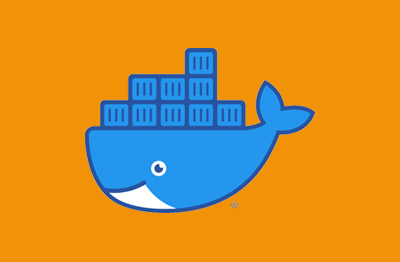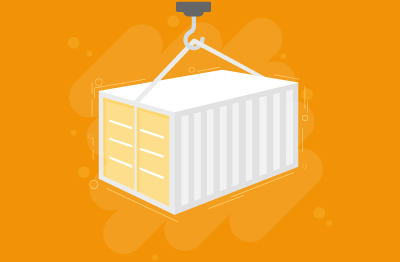Docker
What is Docker?
Docker is an open-source platform for developing, shipping, and running applications, which enables developers to automate the deployment and management of applications within software containers. Docker simplifies the process of packaging software and its dependencies into containers, providing isolation, scalability, and efficient resource utilization. Containerization is now a standard practice in modern software development with Docker being one of the most widely used technologies.
Understanding the Docker architecture
With Docker you can separate your applications from your infrastructure and treat your infrastructure like a managed application. Docker helps you ship code faster, test faster, deploy faster, and shorten the cycle between writing code and running code. Docker does this by combining a lightweight container virtualization platform with workflows and tooling that helps you manage and deploy your applications.
At its core, Docker provides a way to run almost any application securely isolated in a container. The isolation and security allow you to run many containers simultaneously on your host. The lightweight nature of containers, which run without the extra load of a hypervisor, means you can get more out of your hardware. Docker has two major components:
- Docker: the open-source container virtualization platform.
- Docker Hub: the Software-as-a-Service platform for sharing and managing Docker containers.
Docker uses a client-server architecture. The Docker client talks to the Docker daemon, which does the heavy lifting of building, running, and distributing the Docker containers. Both the Docker client and the daemon can run on the same system, or you can connect a Docker client to a remote Docker daemon. The Docker client and daemon communicate via sockets or through a RESTful API.

The Docker daemon runs on a host machine. The user does not directly interact with the daemon, but instead through the Docker client.
The Docker client, in the form of the docker binary, is the primary user interface to Docker. It accepts commands from the user and communicates back and forth with a Docker daemon.
To understand Docker’s internals, you need to know about three components:
- Docker images: A Docker image is a read-only template. For example, an image could contain an Ubuntu operating system with Apache and your web application installed. Images are used to create Docker containers. Docker provides a simple way to build new images or update existing images, or you can download Docker images that other people have already created. Docker images are the build component of Docker.
- Docker registries: Docker registries hold images. These are public or private stores from which you upload or download images. The public Docker registry is provided with the Docker Hub. It serves a huge collection of existing images for your use. These can be images you create yourself or you can use images that others have previously created. Docker registries are the distribution component of Docker.
- Docker containers: A Docker container holds everything that is needed for an application to run. Each container is created from a Docker image. Docker containers can be run, started, stopped, moved, and deleted. Each container is an isolated and secure application platform. Docker containers are the run component of Docker.
Due to the lightweight architecture of the docker and fast accessibility of the applications, Docker is gaining a rapid foothold among IT giants. As continuous access to the applications is the key in such environments, even the smallest degradation in the performance of the Docker would result in huge losses. To ensure the 24x7 availability of the Docker and high-performance rate, administrators need to closely monitor the performance and status of the Docker and its associated components, promptly detect abnormalities, and rectify them before services are affected and end users are impacted.
What is a Docker image and how is it different from a container?
A Docker image is a package that contains everything needed to run software, while a container is a running instance of an image. The image is like a template, and the container is the actual running environment.
Users often share Docker images via container registries. A container registry is a centralized repository for storing and distributing Docker images. It allows users to upload, download, and manage Docker images.
There are several popular container registries available, including Docker Hub (the default public registry), Amazon Elastic Container Registry (ECR), Google Container Registry (GCR), and others. These registries provide a platform for users to publish their Docker images and make them available to others.
Organizations need to undertake due diligence when sourcing or managing Docker images. Application software can end up containing performance issues or security vulnerabilities if developers end up relying on images using outdated components. Whilst Docker makes it easy to package up something yourself to run, unless an organization is building all of their containers from source, they can become difficult to maintain.
How does Docker work with Kubernetes?
An application and its services run in a Docker container. The Docker container is the result of a script contained in a Docker Image. Kubernetes can be used to build an orchestration platform that then allows containers to be operated and deployed. A platform built upon Kubernetes can orchestrate containers - move and scale them to maintain the desired state of the application and end service.
The application itself runs on a distributed system of cloud and physical servers, Kubernetes orchestration ensures that the resources are available and used optimally for the whole system, balancing and adjusting according to the needs of the applications running. In principle, this means with the right triggers and monitoring an application can respond to the demands on it. If demand surges, additional copies of a container can be spun up in seconds in geographies nearer to the demand. All of this relies on the infrastructure and tools within Kubernetes functioning correctly, so those looking to monitor Docker usually need to use a tool also capable of monitoring their orchestration platform and its dependencies.
What are the key benefits of Docker containers?
Containers offer a practical way to build, test, deploy, and redeploy applications on multiple computing environments. The benefits of any container implementation include:
- Lower overhead: Containers require less system resources than virtual machines because they don’t include entire operating system images.
- Enhanced portability: Applications running in containers can be deployed easily across computing environments – on-prem and cloud, different container engines, etc.
- Ensure consistent operation: Applications deployed using containers will run the same, regardless of where they are deployed, so there are fewer surprises in production environments. Eliminates the “but it worked on MY computer” factor when reproducing bugs and support issues.
- Greater efficiency: Containers allow applications to be more rapidly deployed, patched, and scaled.
- Streamlined application development: Use of containers can accelerate development, test, and production cycles.
As one of the most widely adopted containerization technologies Docker offers users additional benefits. There is a strong ecosystem around Docker and it is relatively easy to access information, support and workers with Docker expertise.
What insights should a Docker monitoring tool provide?
An enterprise monitoring tool such as eG Enterprise designed to support Docker should provide you with comprehensive Docker monitoring without the need to interact with the Docker image or modify any run commands.
You should expect to be able to:
- Track which containers have been created and removed, and which are running, stopped and paused
- Detect capacity issues and see where there are not enough hardware resources for your Docker containers
- Use transaction tracing to identify bottlenecks impacting the end-user experience
- Visualize and understand resource utilization trends and historical analytics help forecast future capacity requirements




